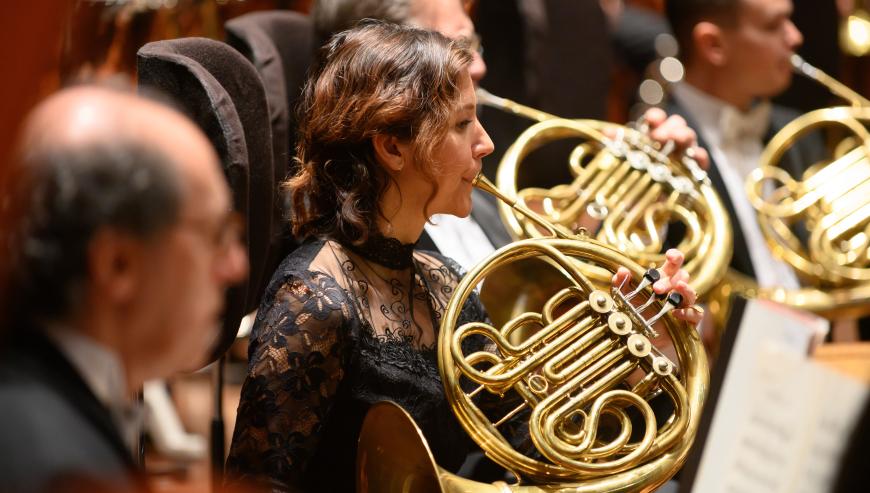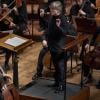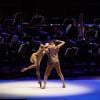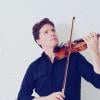
“Sixteen minutes in, something happened.” That’s how my theory teacher introduced our class to the music of Anton Bruckner: same, same, different. And that’s how it was with the San Francisco Symphony’s performance of the composer’s Fourth Symphony on Sunday. This isn’t to say that the beginning was boring. But it was in the second movement, a good 20 minutes into the piece, that the music really got going.
Bruckner later described his Symphony No. 4, subtitled “Romantic,” with imagery of birds and barrel organs, hunting and heroism. But the real romance of the piece — its heart — is harmony. The music stands on chords that Bruckner worked so hard to build right. He rewrote them again and again, as he revised practically all of his music. In the 1880 version of the Fourth, which took the SF Symphony about 70 minutes to perform, the theme groups stack to the sky like scaffolding.
The climb can feel daunting, but Bruckner guides with a firm hand. Take the texture: For all the scope of his sonata form, he uses a rather modest orchestra, then cuts it to size. From these smaller consorts, the chords ring as clearly as they would on an organ (the instrument Bruckner practiced 12 hours a day). And yet what depth the SFS string complement created on Sunday, the violas especially.
The brass fanfares of the “Hunting Scherzo” were bright and incisive, the violins silken in the movement’s trio, which is just a slip of a thing. Gustav Mahler’s symphonies owe a debt to these languid lines, and though it was SFS Music Director Esa-Pekka Salonen who conducted this performance, some of its elegance seemed to have spilled over from the yearslong Mahler project led by Michael Tilson Thomas (now music director laureate). An orchestra doesn’t easily forget.
“When musicians give their DNA to an orchestra, it stays there forever,” Salonen said on Sunday in acknowledgment of those players who are retiring from the SF Symphony after this season. They include violinist Nadya Tichman and cellist Peter Wyrick, whom you’d recognize from the front stands, and violinist Amy Hiraga, cellist Jill Rachuy Brindel, and bassoonist Steven Dibner, whose faces you might not remember but whose presence you’ve felt. It’s much the same with Bruckner’s score. For a big symphony, there aren’t many big solos; often, it’s an inner line — foggy scales in the second violins, for example — that makes the music what it is.
Robert Schumann’s legacy could well have been short a piano concerto had his wife Clara not encouraged him to write one. Having abandoned several earlier attempts, Schumann finally reworked an earlier fantasy for piano and orchestra to finish his Piano Concerto in A Minor, Op. 54. It was worth the wait. The expanded work is at once sober and songlike, regimented and rhapsodic. How puzzling it was that such an esteemed artist as Yefim Bronfman, the evening’s soloist, did not venture in any of these directions.




